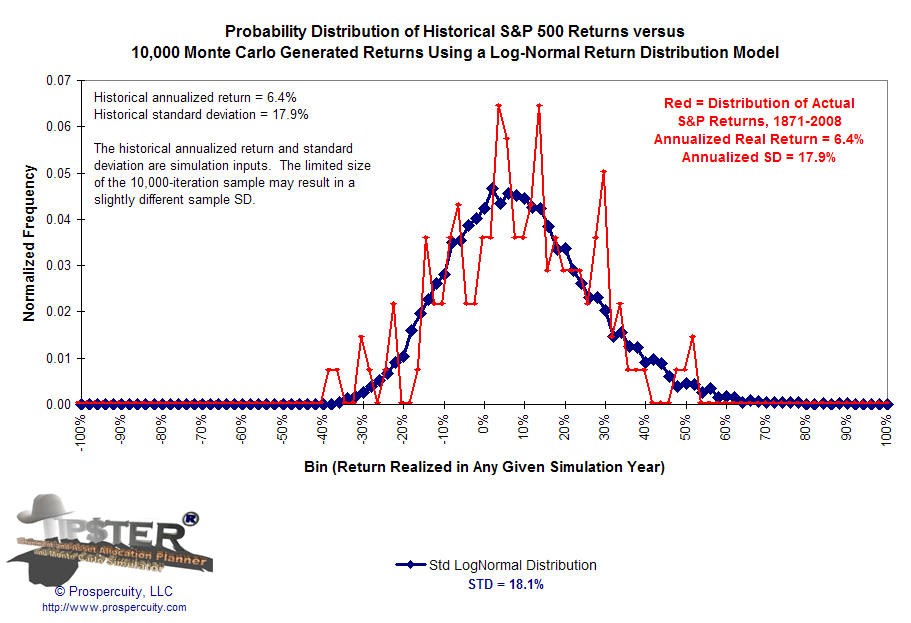A Monte Carlo Case Study Can I Retire Early
Post on: 16 Март, 2015 No Comment

Last week’s post about Monte Carlo simulations in financial planning sparked some interesting comments, so I thought a case study would help readers see how they work. Our real-life example comes from a past client of PWL Capital’s DIY Investor Service. the details were supplied by Justin Bender with the client’s permission.
Laura is 57 years old, single, and earning about $68,000 a year with expenses of $37,500. She socks away about $14,000 annually and has accumulated $330,000 in her RRSP and TFSA, as well as a rental property worth about $250,000. She has a defined benefit pension through her employer, though it is not indexed to inflation, and she’s eligible to receive full Canada Pension Plan and Old Age Security benefits in retirement.
Her investment portfolio was not very efficient: about a quarter of it was sitting in cash, and much of the rest was in narrow sector ETFs, individual stocks and corporate bonds. Some of the ETFs were in the wrong account types. resulting in unnecessary taxes.
Before Justin could rebuild her portfolio, however, he needed to make sure it was aligned with her financial goals. Laura’s primary objective was to determine whether she could retire before age 65—perhaps as early as 60—so she needed to know whether her investments would be able to generate enough cash flow after she quit work. Let’s look at how a Monte Carlo simulation helped answer that question.
Sim city
Before beginning the simulation, it was important to understand Laura’s comfort with risk. The Monte Carlo might indicate a high probability of success with an equity allocation of 70% or 80%, for example, but that would be irrelevant if Laura could not deal with that level of volatility. With the help of a risk-tolerance questionnaire and an honest interview, Justin determined that Laura would be best suited to a portfolio of 60% fixed income and 40% equities.
Using the Monte Carlo software. Justin input Laura’s current portfolio size, her savings rate, her projected expenses in retirement, and her other income from employer and government pensions. (The software is already programmed with the details of CPP and OAS benefits at different ages.) Then he used the following assumptions:
- the expected returns are 2.5% for fixed income and 7% for equities, which works out to 4.3% for the portfolio
- investment costs are 0.3%, reducing the portfolio’s expected return to 4%
- the portfolio has a standard deviation (volatility) of 5.75%
- inflation is 2%, and Laura’s annual expenses would increase by this amount
- Laura would live to age 95
Given all of these inputs, what is the probability that Laura will be able to retire before age 65 and not outlive her money? Here are the results of the Monte Carlo simulation:
Proposed retirement age
Probability of success














